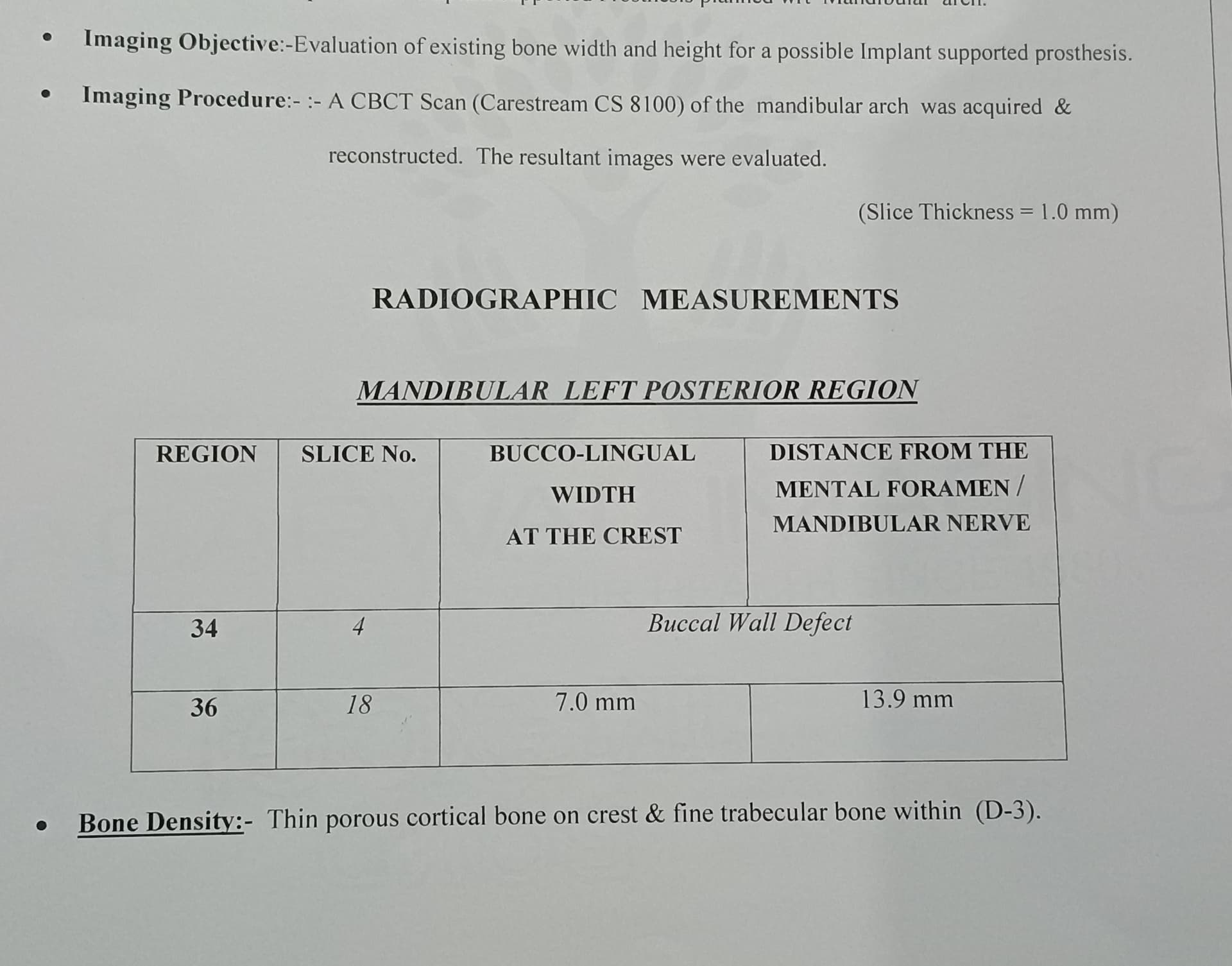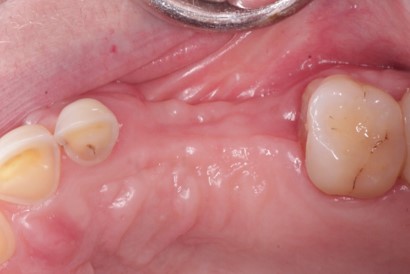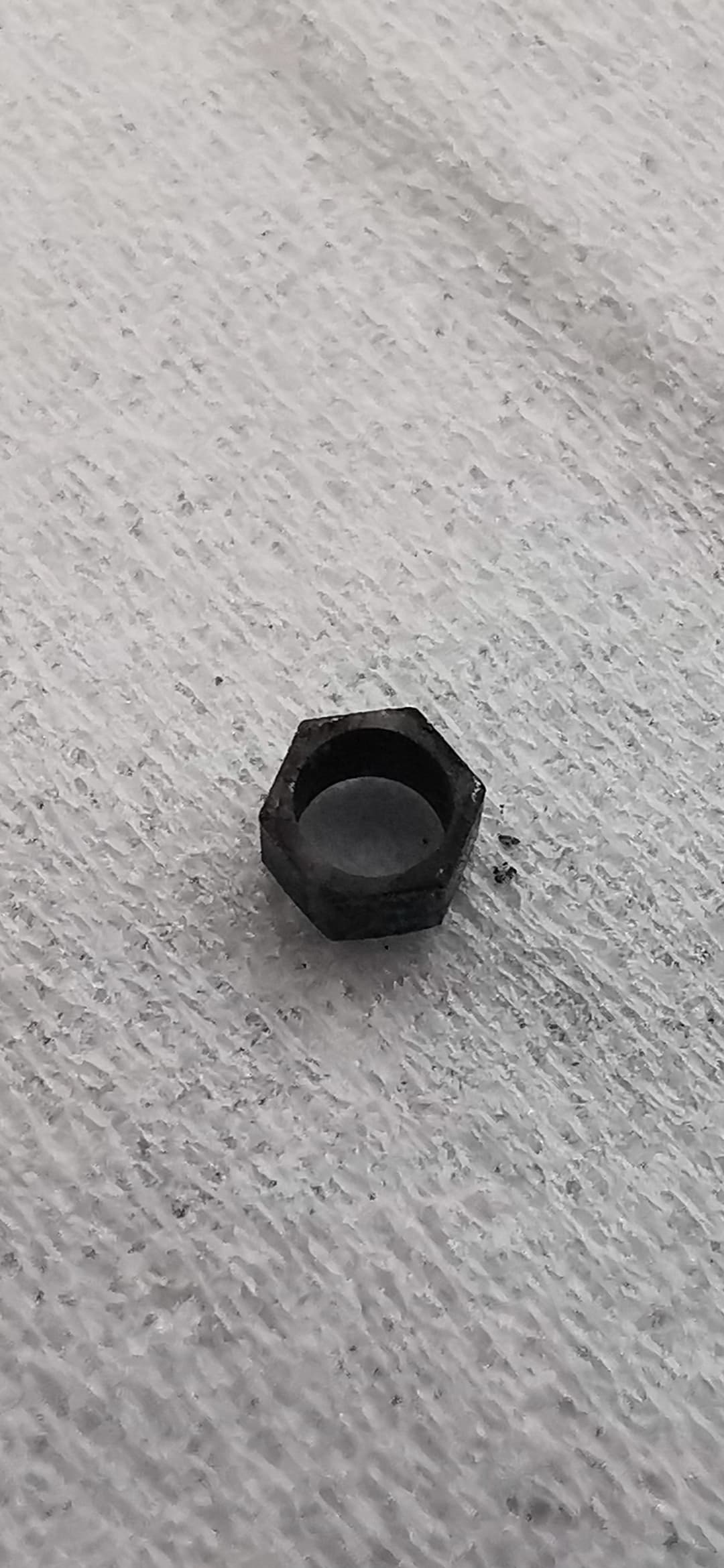Case Placing Longer Implants for Stability: Is There a Contraindication?
Dr. U asks:
#8 is actually fractured at the gum line, and will need to be extracted. I am planning on placing a 15mm Nobel Active immediate implant. Are there any contraindications in placing longer implants for stability? There appears to be more than enough bone in this case. Any thoughts?
31 Comments on Case Placing Longer Implants for Stability: Is There a Contraindication?
New comments are currently closed for this post.
vj
8/9/2010
there should be no problem at all placing this length of implant looking and the pa and your description of bone volume. as far as i am aware there are no contraindications to placing longer implants so long as you have the bone volume to accomodate.
SBoral surgeon
8/10/2010
I routinely place 18mm long implants in these sites. I like to engage the floor of the nasal fossa as it is a very dense layer of cortical bone. This takes some skill and fine touch as you do not want to traumatize the nasal mucosa.
It is important to know and understand the anatomy of these areas well if you are going beyond the socket boundaries.
Remember that your osteotomy is mostly palatal. If you are Ben the slightest bit buccally oriented, the drill or implant will track to the path of least resistance, which is always through the buccal plate.
SG perio
8/10/2010
The literature supports the fact that there is a markedly greater increase in surface area of the implant as you increase the width as opposed to the length. In addition, you want to place at least a 5mm wide implant in this site to facilitate optimal restorative therapy. I do not see any advantage to doing an 18 mm long implant in this site. I have seen one fixture placed by an oral surgeon protruding into the nasal cavity. Why take the risk, for a questionable gain??
Alejandro Berg
8/10/2010
i usually place between 13 and 16mm so I dont see a problem with that. Just be mindful of the nsal floor cortical bone.
cheers
Daniel Sweet
8/10/2010
According to Misch, 12mm is plenty. Much over that you are gaining nothing. I say go for good technique and good initial stability.
Elie A. DES in Oral Surge
8/10/2010
hi, the recomendations for immediate implantation are to drill 2 to 3mm below the root apex if you want to put the implant in the same axis and the diameter should depend on the diameter of the future crown, and occlusal loads are located in the first 5mm of the implant, that's why you don't have to put a longer implant. I think 4mm*13mm is enougth for your case if you have a sufficient width of bonne buccolingualy seen on ct scan and don't forget to have at least 1,5mm of bone buccaly to avoid any bone resorption later on after implant placement.
Dr G John Berne
8/10/2010
There are no real functional reasons why you need to put in a longer implant. 12mm long implants should be adequate. The contraindication for placing longer implants is that there is a greater risk of involving the adjacent roots or of a buccal fenestration with the longer implants, and for no real extra long term stability. If the root is so wide that you aren't getting stability with your immediate implant, then you may need to go longer to get the initial stability. If this is not the case then there is no need for the longer implant.
Robert Buksch
8/10/2010
You have plenty of bone here I see no reason not to go with the long implant, just be careful of angulation so as to preserve facial plate.
Daniel Nickles
8/10/2010
2-3 mm beyond the apex of the existing socket should be sufficient for initial stability. I see no reason to engage the floor of the nasal fossa, no gain for the potential risk. Be mindful of the incisive canal, stay buccal, and bone graft and you should be fine. How are you going to temporize?
Mike Heads
8/11/2010
Lenght of implant here is not a problem but if you take the advice of placing a 5mm wide implant stand back and wait for it to fail. You will lose the buccal plate. As you are going to use a Nobel Active implant that has a concial connection you can go much narrower thus keeping much more buccal bone thickness and still have the strength of connection for longevity, though to get a good emergence profile you may need to place it a little deeper
sag
8/11/2010
It is difficult to make decisions about implant placement when you are dealing with two dimensional images. The question is asked about the length of the appropriate implant when in fact there is no knowledge about the facial-palatal dimensions or anatomy.
Getting a full understanding of the anatomy via CBCT analysis will help you make the best decision.
Dr. Alex Zavyalov
8/11/2010
I completely agree with Dr. Berne: the size of any implant insertion depends on its function..
In this particular case a 12 mm-length is more than enough.
hung dinh
8/11/2010
Normally on a max central I use a 4.7mm dia, for better emergence profile. However, tooth number is awfully close. Doing an immediate in this case is quite tough. You might want to do a two stage, with the ability to do a shorter, but wider implant. Good luck.
Richard Hughes, DDS, FAAI
8/11/2010
Mike Heads you are most correct.
Dr. Samir Nayyar
8/12/2010
Hello
Longer implant can be put but it depends on the nasal canal also. i think 15mm is more than enough to be safe & precise.
Dr.Bülent Zeytinoğlu
8/12/2010
The length of the implant you have planned to use wıll not cause any problem but apical x-ray graphıes give limited information so after the extraction of the radix the socket shoud be carefully examined for the thickness of the buccal compact bone and for any granulation tıssue.If the socket inclenation is followed during osteotomy usually fenestration of the buccal bone occurs so ıt ıs better to prepare the cavity palatally.And if there is a bıg gap between the socket walls and the implant this gap shoud be filled with graft material. Wound closure is either done by covering the socket opening by a membrane and mouveing a flap from the vestibule (which is preferable) or usıng two stuatıon stures mesial and distal to the implant exposing the cover screw to the oral cavity. Good Luck.
Dr Fadi Badra
8/14/2010
I believe that CBCT will answer all the questions in this case deciding :
1- the thickness of the buccal plate more specially at the apical area
2- the position of the nasal floor
Placing longer implant will not affect the prognosis of the implant as long as you position the implant slightly palatally and fill up the socket with bone graft material covered by membrane then close it with the gingival flp , leave it for 6 months and then restor it
All the best.
Bruce GKnecht
8/17/2010
I look at the apex and the amount of bone beyond it. This is opportunity and the assurity that I can stbilize this implant and place an immediate temp taht the time of sugery. Love these cases.
Bruce A Uchida
8/17/2010
I agree that a 12 or 13mm implant would be fine in this site, however I would like to place a longer implant to get more initial stability so that I can do this in a single stage. What are your thoughts on doing an immediate temporary crown after placement of a 12 vs a 15mm length fixture? It seems logical to me that longer would be better.
Going with a 5mm wide implant is of no advantage in emergence profile with the Nobel Active system since the 4.3 and the 5.0 have the same platform size.
Gregori M. Kurtzman, DDS
8/17/2010
You can place an implant at least to the level of the laterals but I think you can go a few mm beyond that. I would suggest not prepping the to the diameter of the cervical of the root as this will give you better initial stability. (ie the root measures 5mm at the cervical final drill is a 4mm drill)
Thomas Gibbs
8/17/2010
If you’re going to place the implant at the time of extraction, you’ll need to obtain stability. To do this you will probably have to go slightly further than the initial root length, direct towards the palate (will probably have use a Lindmann burr to get the right direction), and add some grafting material to correct the size discrepancy of the implant/root.
JW
8/24/2010
I typically place 18mmx 6mm in these sites...18mm wide and 6mm length.
Seriously though, 5mm is pretty wide for this space. You'll need a minimum of 9-10mm of ridge width for this to work. 5mm for the fixture and 2mm either side for the cortical plate. If you are going to err on the palatal, you'll need closer to 10-11mm. Pretty darn wide. Length is determined by stability. You probably can get a 13 in there. Remember your parameters. On the apical end, you need a minimum of 2-4mm of apical bone for primary atability. You would use a longer implant if you can't get primary stability at that depth, but there is no other advantage. You also increase the risk of perfing. You need to be 3-4mm from the CEJ of the proposed restoration. Those are your parameters. That is the size implant you need,
t.v.narayan
8/27/2010
Longer is not necessarily better!The key here is Atraumatic extraction(if there is anything like that!),an integral labial plate and primary stability which in this case should easily be achieved by a 13 mm long fixture.Don't go wider than 4.3-5 mm,let your implant crest be at least imm -1.5 mm palatal to the crest of the labial plate.so choose your diameter keeping this in mind.All the best and let us know how it turns out
Dr. Dennis Nimchuk
8/29/2010
Longer and wider is a good general engineering principle but there is such a thing as too wide and too long depending on the anatomy as has already been very well expressed by other posters. In this case I observe that the root length of the centrals are notably shorter than the root length of the laterals which is a deviation from normal. This leads me to suspect that the position of the floor of the nasal cavity may be lower than you think and on looking at your image I believe this may very well be the case. It may be worthwhile to obtain a tomogram of the site to ascertain exactly what you have or don't have.
K. F. Chow BDS., FDSRCS
8/31/2010
Dr U. 12mm length is sufficient. Ankylosis aka osseointegration in the case of dental implants is much stronger sq mm to sq mm than that of a natural tooth's periodontal ligament. Stronger in this case merely means that you can extract a natural tooth but you cannot extract an osseointegrated implant accept by fracturing the immediate bone around it.
From the xray, the root of the tooth is closely approximated to the periodontal ligament of the lateral, thus extreme care must be taken not to injure the periodoantal ligament of the lateral! Also, it does appear that a post-crown can still be constructed on the said tooth!
We do well as dentists to follow one of the most basic principles of dentistry....."Conservation of sound tooth structure". I feel in this case, post crowns should be constructed on the two centrals and splinted together for strength and durability. After all the left central is already root treated with a crown/veneer on it.
Yeah. No implants are necessary in this case....just 2 post crowns splinted together. We must never subcumb to the hubris of ever thinking that our dental implants are ever better than a real tooth, as long as the real tooth can still be restored reasonably with other methods.
Dr. Prashant Nanda, BDS,
9/8/2010
For starters, I would have to agree with Dr. Chow, and its true that implants are an excellent replacement for "missing teeth". So if the tooth can be saved by doing a good post and core, why not?
However, if you do decide to go ahead with placing an implant, I see no problem with the length of implant you intend using, there appears to be adequate amount of bone available apical to the tooth. The real question though is just how much more stability would you achieve by using a 18mm implant instead of a 15mm?? And to me it wouldn't really make much sense putting a 18 mm when I can get good primary stability with a 15mm implant.
Probably a more important factor to consider is the diameter of your implant. People would typically say that one must go more palatally, but I personally feel that if you follow the socket anatomy, without really putting too much pressure on the buccal plate and keep your osteotomy preparation only slightly palatally, you could get good stability and great esthetics. A 4.2 or 4.5 depending on the system should suffice.
Also depending on the jumping distance you can take a call on whether or not bone graft is required.
Just be sure not to go too close to the lateral incisor or the incisive canal during your preperation.
Ken Clifford
9/9/2010
I agree with Dr. Chow - are you sure an implant is the best solution for this case? It appears that neither #8 or #9 has a post, which may have been a factor in the fracture, and probably leaves #9 susceptible to future fracture as well. From the x-ray, this patient appears to have good oral hygiene, no perio evident, and has spent plenty of money on those veneers. Unless you actually want to do a later implant on #9, why not place two posts and splint two crowns? No emergence profile problem, you could go with all ceramic crowns to match the existing veneers, it would be less costly for the patient and likely prevent a future problem with #9. Note you are not "destroying" the adjacent tooth, you are probably strengthening it with the post buildup. On the original question, you need a CBCT scan. Since this is already an expensive case for the patient, I doubt the extra cost for the scan would be a problem. You can't see what you can't see without the scan.
Sanglyong Yoon
9/10/2010
12-13mm is far enough period. But saving the natural tooth should be considered as the 1st option.
Dr Dimitrov
9/10/2010
I couldn`t agree more with the last post. Only Dr. U can make the final plan of treatment and be responsible for it,but it also looks to me, that unless tooth#8 doesn`t have a subcortical/subgingival fracture it would be wise to consider a core buildup and a porcelain crown. This is the KISS rule (keep it simple & safe).
If prosthetic restoration is not an option, Obey the Priest`s rule of "The triple three" for a predictable esthetic outcome (yet predictable is not guaranteed):
1. The center of the implant should be at not less than 3 mm from buccal (better 4mm)
2.End of implant platform apically should be about 3 mm from the margins of the adjacent clinical crowns- thus you provide the esthetic stability in time of your future crown
3.Third rule (doesn`t count here) provide not less than 3 mm between implants
4. Choose an implant not wider than 3.7-4.00 mm
Thus when you measure the position of the implant platform, to the nasal fossa is the space YOU CAN PUT IMPLANTS in.It`s your choice whether to go for a 13, 15, or 17mm. Keep in mind that after integration only the coronal 5-6 mm are load bearing, everything else is needless luxury. That is a 13 mm implant will do just fine AT TWO STAGE APPROACH as an 18 mm.
If you want to go for immediate load, that`s different. Go deeper.To the nasal fossa.
Bottom line- for two stage- 4-5 mm below the alveole is enough, for immediate-the deeper the better.
Good luck
dr shrikar desai
9/13/2010
dr u,
1. closely observe---- thin or less width of bone between lateral & canine ( ct has to confirm it. )
do not involve interdental bone for primary stability though u can do it on mesial side.
2. whether to one stage or two stage?
3. one stage ( immediate loading not preferred )--- longer implant i.e. more than the depth of the socket at least 2-3 mm.Following stages are common for both except 4a & 4g.
4. two stage ----
a. preferred method is delayed implant placement ( 3 weeks for soft tissue profile )
b. using width of 4.5 - 5 mm
c. placing the implant using the support of palatal bone only . as i stated above mesial interdental bone can be involved.( for greater stability )
d. thorough debridement of socket.
e. bone graft placement around implant with gtr coverage.
g. implant length should be = socket depth
with this , purpose of achieving primary stability will be fulfilled.
amir nhar
11/23/2010
usually i drill 3-54 mm beyond the apex to reach the primary stability needed for immediate loading .


















